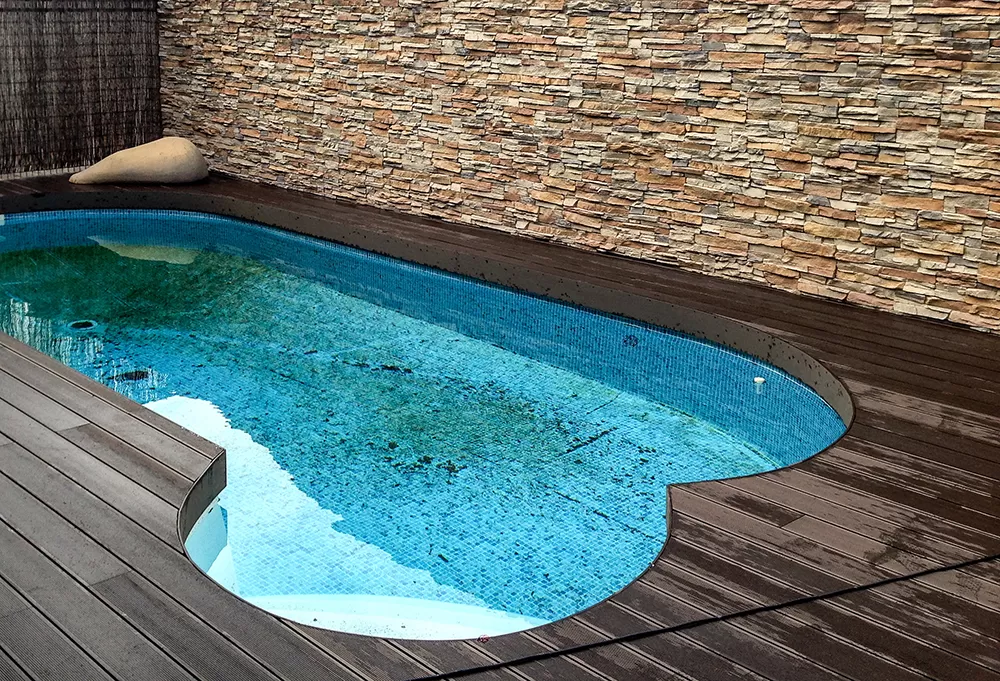
Black Spots in Pool: What Are They and How to Deal with Them
Is your pool full of dark raised heads on the water? Do these spots don’t brush off, no matter how hard you scrub? Today we’ll show you what these black spots in pool mean, how to get rid of them, and how to protect your pool.
Being among the most common threats for pool owners, black spots can certainly seem hard to handle. However, with these simple steps, you won’t be suffering from this problem any longer!
Why Are There Black Spots in My Pool?
Firstly, you must know what these dark spots are and why your pool has them. Although these spots may seem black, you may be surprised that they may actually be dark green to blue. When your pool has these dots, then it’s very likely that you’re dealing with algae growth.
Black algae spots are most prominent on your pool walls and floor. However, when finding these speckles on your pool surfaces, then this means that they’re on your pool’s pumps and filters as well.
For this reason, simply removing the visible spots won’t do any good since they will eventually come back after a couple of days.
There are a number of reasons why your pool might become a petri dish for dark green algae. Here’s why there may be black spots in pools:
- Low phosphate levels
- High pH levels
- Low chlorine levels
- Poor water circulation and filtration
- Old pool walls
- Warm sunny weather
You’ll also want to make sure that these spots are in fact algae and not mineral staining. Mineral stains, such as coming from copper and manganese, tend to have a rusty appearance and discolor the surface. Black algae spots, on the other hand, have a more speckle-like appearance.
What Are the Dangers of Black Spots in Pools ?

Although black algae themselves aren’t as dangerous as moss or any mold, they can surely act as a magnet for harmful bacteria and insects. Among these pathogens, we have E. coli. These bacteria can get people sick when swimming in a pool full of algae.
Additionally, if pool owners don’t take action quickly, then these algae can eventually damage your pool’s structural integrity. Algae can get into your pool’s cracks and make it much more difficult to handle.
Lastly, when a pool starts counting on this problem, it can give an unpleasant impression. Algae can give your pool a filthy and dirty appearance that doesn’t invite anyone to dive into.
Steps in How to Get Rid of Black Algae in Your Pool
Now that you know the main causes and dangers of black algae in pools, it’s time to know how to get rid of them.
Pool owners must be aware that removing black algae can be a lengthy process that can take you several days, depending on how serious the issue is. If you’re counting on a severe algae infestation on your pool, then it’s best for you to call a professional to handle the work.
Luckily, you can take care of the situation if you’re counting on a mild case of algae. In fact, you probably have all of the items needed if you’re a pool owner! The only things you would probably need to buy are items such as granular chlorine, chlorine tablets, and algaecide.
Follow these steps to get rid of the black spots in your pool:
- Start by cleaning your equipment.
- Scrub pool surfaces with chlorine tablets.
- Clean your filters.
- Add granular chlorine, algaecide, and shock the pool.
- Run the pump.
- Repeat process for two to three days.
- Test the pool’s water chemistry.
Let’s dive into each of these steps and take a better look at them:
Start by Cleaning Your Equipment
Before cleaning your pool, you must make sure that your tools and equipment are clean and sanitized. That way, you can make sure that no more algae are making their way into the pool.
When cleaning your equipment, all you need to do is scrub down your tools using a chlorine solution that isn’t too abrasive.
Scrub Pool Surfaces with Chlorine Tablets
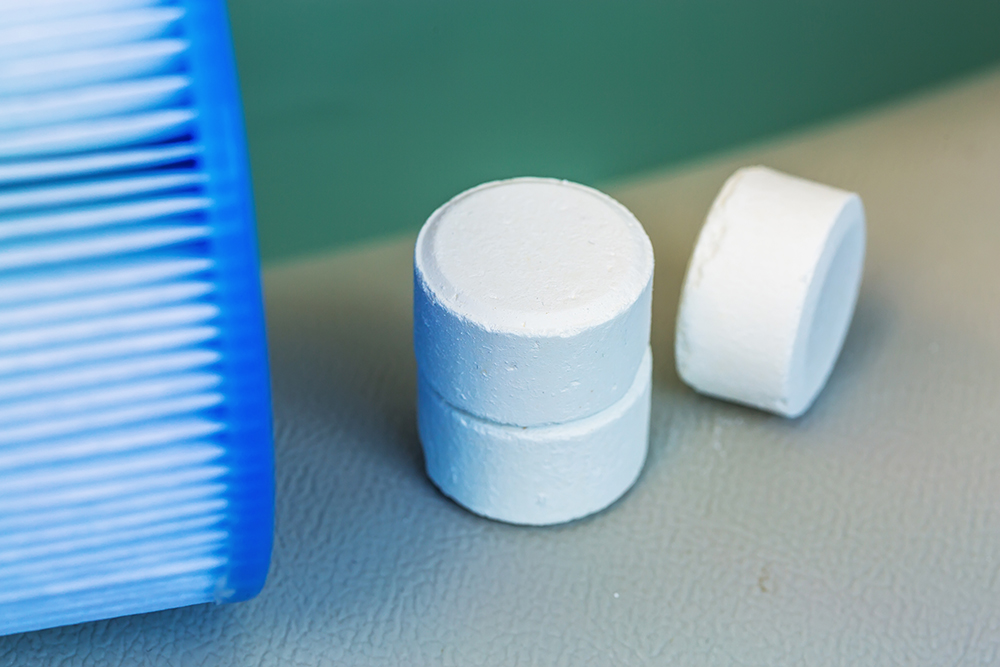
After sanitizing your equipment, it’s time to start brushing away the algae from your pool. First, begin by scrubbing the pool’s surfaces using a stainless steel bristle brush. In case you count on a vinyl pool, use a softer brush such as nylon-bristle one instead. Also, be sure to take extra time scrubbing around fixtures and corners.
When encountering any tough spots, you’ll have to use the chlorine tablets. However, before using them, be sure to put on protective gloves and eyewear. Brake one chlorine tablet in half and use the broken edge to scrape off the spots.
After scrubbing off the dark spots, you’ll want to brush your pool again.
Clean Your Filters
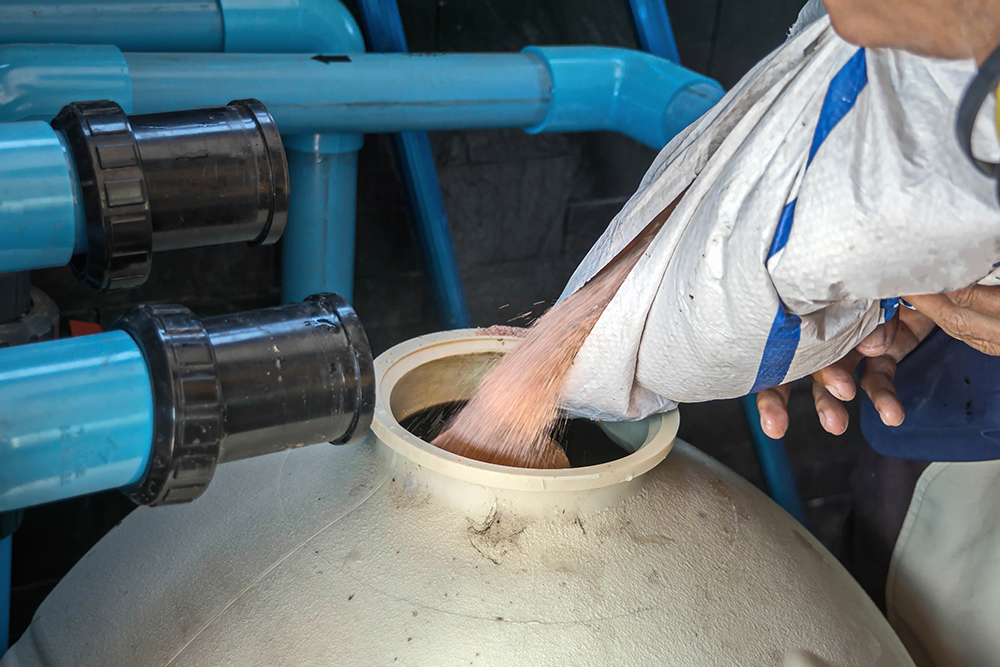
Just like we stated before in this article, algae can be in your pool’s filters as well. That’s why if you want to completely eliminate these black spots, you’ll need to take care of the filters as well.
Depending on how much algae there is in your pool and the type of filter you count on, you’ll have to follow different methods to clean them. For instance, if you have a sand or a DE filter and there’s a small number of algae in your pool, then you’ll have to backwash the filter.
In case you have a more serious problem, you’ll want to use a filter cleaner as well. Additionally, if algae are simply too tough to remove from your filter, then definitely consider replacing the cartridge.
Add Granular Chlorine, Algaecide, and Shock the Pool
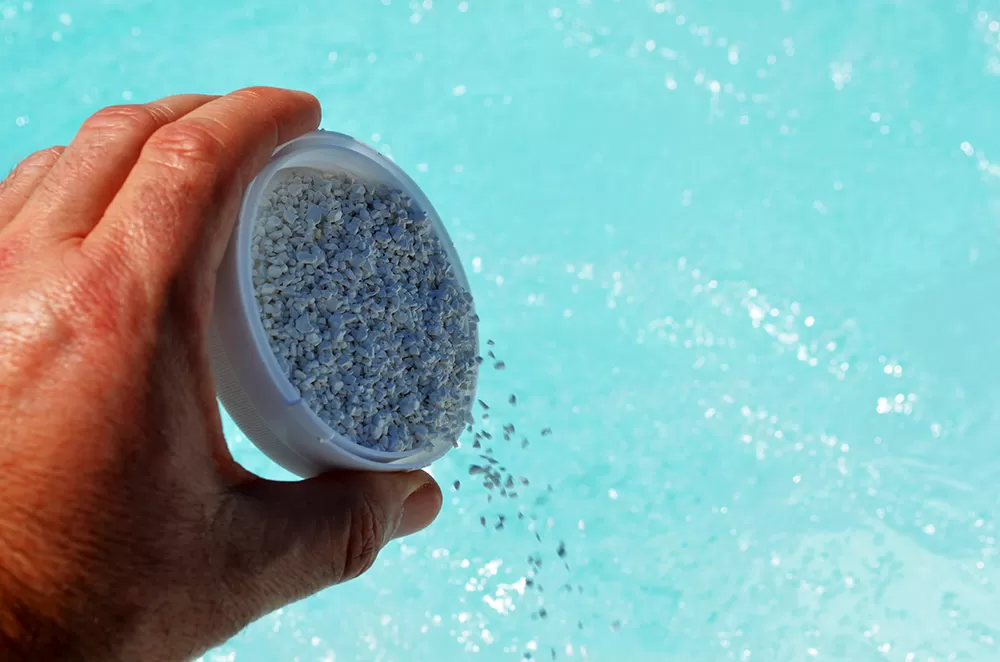
After successfully brushing off your pool and cleaning your filters, it’s time to apply the good stuff that’ll for sure get rid of the black algae.
If you count on a light-colored pool, you’ll want to use granular chlorine. First, take the granular chlorine and apply it to your pool, especially to areas that were deeply affected by the algae. Beware that this solution can cause discoloration if your pool is dark-colored.
Additionally, you are free to use an algaecide to treat the algae in your pool. However, be sure to follow the instructions the algaecide brings since it can be a bit harsh for your pool if you use too much. This product will help you prevent any future algae breakups as well.
Lastly, it’s time to shock treat your pool. Although the previous two solutions are optional, shocking your pool is a must if you want to effectively remove black algae. A shock treatment kills any harmful bacteria it may have. It also prevents this sort of issue as well.
You’ll want to shock your pool using a calcium hypochlorite solution. When applying this treatment, use up to three times more the amount you would normally use. In other words, shock your pool’s water having 30 parts per million. Also, remember to do this procedure at night.
Run the Pump
When you finish shocking the pool, you’ll have to run the pump for 24 hours. That way, you’ll make sure that the shock treatment is equally distributed in your pool.
After running your pump for a complete day, bear in mind that it’s completely normal for your pool to count on cloudy water. This brings us to our next step.
Repeat Process for Two to Three Days
Because your pool may count on cloudy water, it’s time to repeat the whole process again. However, this time isn’t as rigorous as the first time you did it. You’ll have to scrub your pool between two to four more times. By doing so, you’ll make sure that no algae spores are left behind.
It’s also a good idea to shock your pool again. Nonetheless, this time you can use the normal amount of treatment.
Finally, you’ll have to clean your pool’s filter again. You can simply backwash it if you wish. Remember to run the pump after doing the process all over again.
Test the Pool’s Water Chemistry
Last but certainly not least, you’ll want to monitor your pool for the next couple of weeks. Check if the pool’s water is balanced. Use the chart down below to check if your pool’s levels are correct.
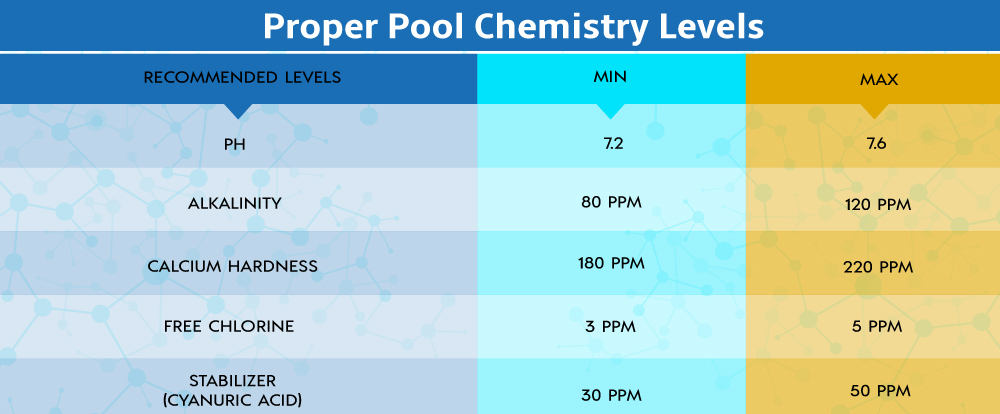
If you start to notice any signs that algae might be coming back, be sure to perform the process all over again, scrubbing your pool at least two times a day.
Ways to Prevent Black Spots in Your Pool
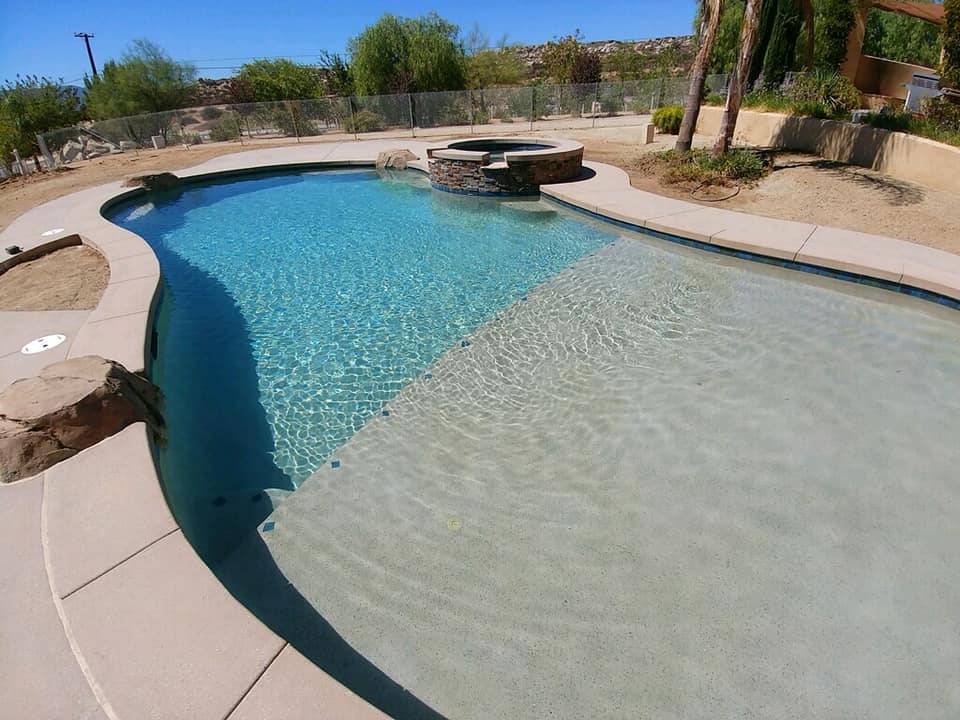
After following the previous steps, you should count on a pool free of black algae. However, you must keep your pool clean and well maintained to prevent this sort of problem from happening again!
Just like we explained on our pool maintenance 101 guide, there are five main things all pool owners must do to keep their pool in top-shape. From regularly cleaning your pool to keeping proper water circulation and applying shock treatment, you should keep up-to-date maintenance to your pool.
Additionally, another factor you should consider is the cleaning and sanitizing of your pool’s equipment and accessories, including pool toys and floats as well.
Lastly, if you have a pool near the beach, the Water Quality & Health Council suggests that people must take a shower before diving into the pool, especially after swimming in the ocean.




